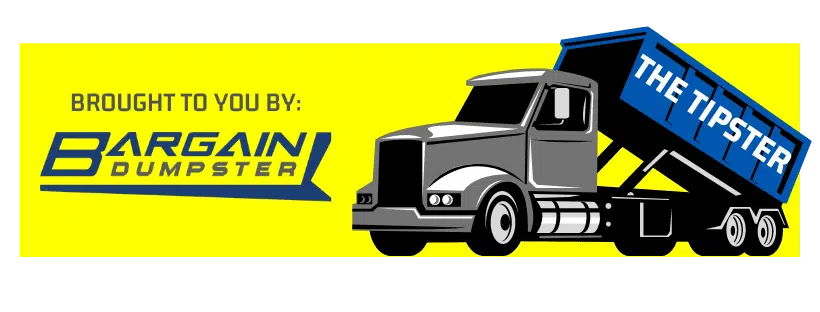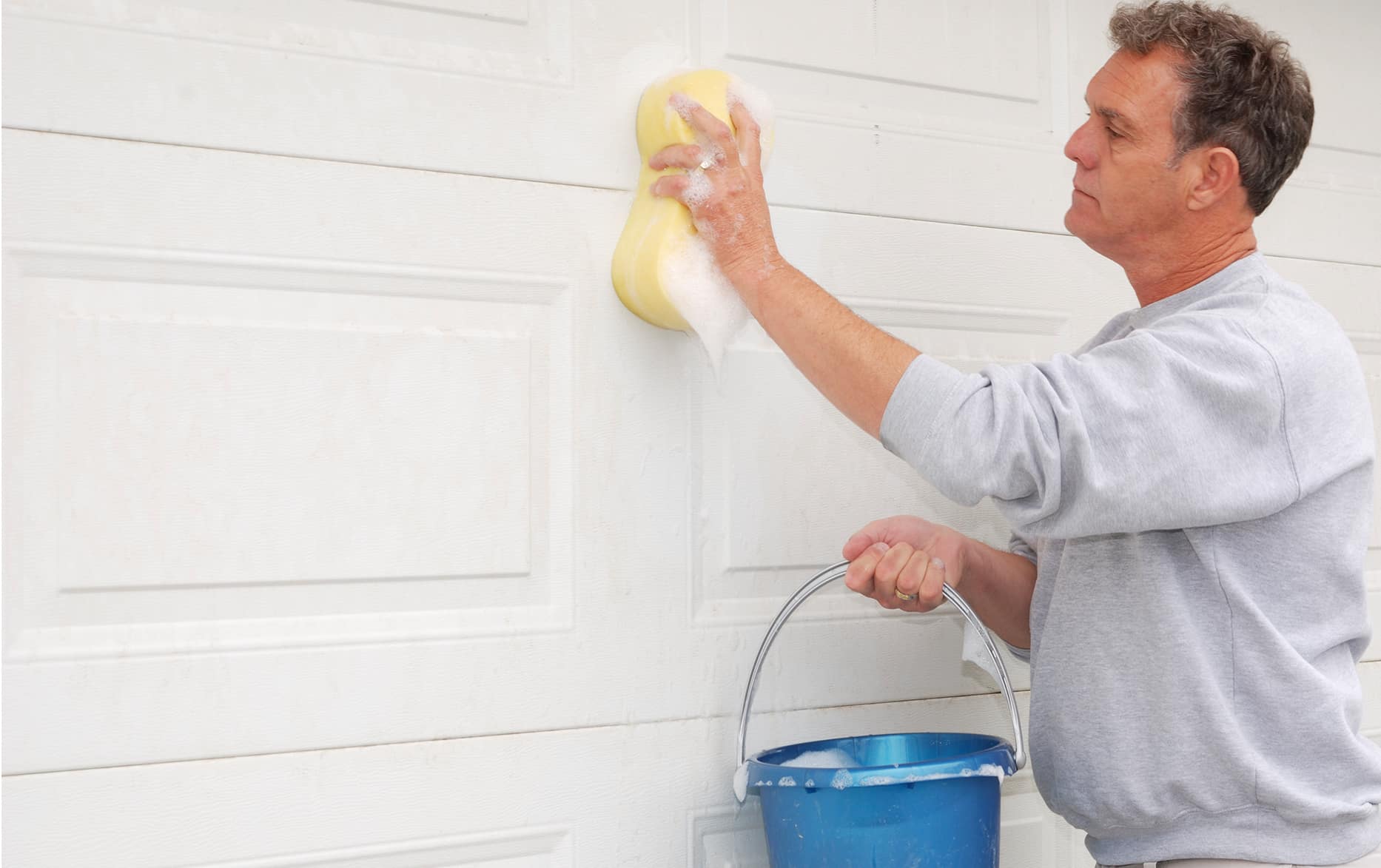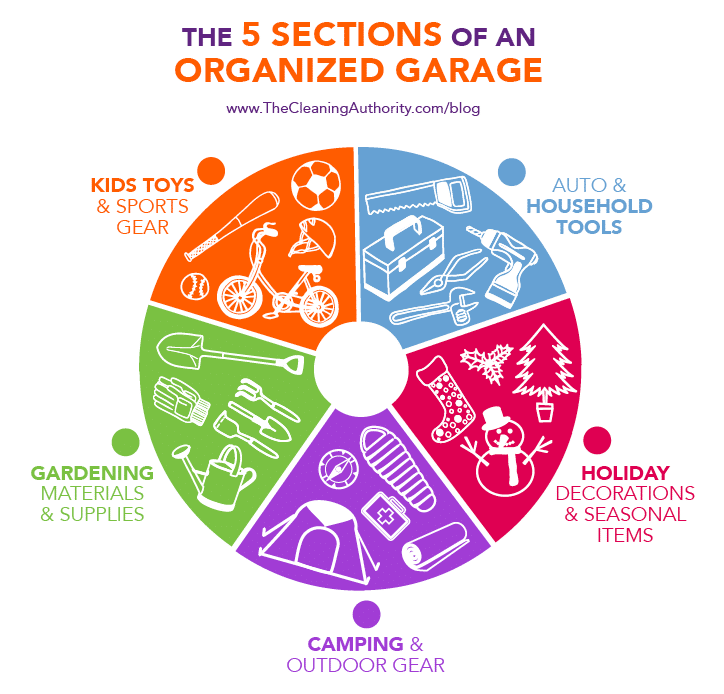7 Tips to Make Cleaning Your Garage Easy
A clean, organized garage makes life easier and lowers stress. It’s where you park, fix things,
store gear and grab tools. But tidying up can feel impossible when boxes pile up and dust takes
over. Discover simple, doable steps to clean your garage without burning out — how to sort
your stuff, scrub the right places, set up smart storage and keep the space fresh.
Why Does Your Garage Need Attention?
A cluttered space doesn’t just make a mess. It can wear on your mood. Studies show a clear
link between disorganization and mental health challenges like anxiety, stress and depression.
Messy rooms can trigger frustration and helplessness, which makes it even harder to get
moving. Clearing clutter reduces those feelings and gives you a sense of control.
If you can’t find tools fast, can’t park your car or walkways are blocked, it’s time to give your
garage attention. Strong smells from fuel or paints, sticky floors from leaks or dust that keeps
returning are other red flags. Fumes from stored products like cleaners, paint and automotive
supplies can also affect indoor air quality.
7 Ways To Make Cleaning Your Garage Stress-Free
Your first deep clean will feel like the toughest one — and that’s normal. After you set up a
system, future tidying will be faster. Take breaks, drink water and keep going.

1. Create Sorting Piles
Grab four big boxes or bags and label them — Keep, Donate, Sell, Discard. Work one zone at a
time and move every item into one of those piles. Don’t overthink each choice. If you haven’t
used it in a year, that’s a clue. If it’s broken and you won’t fix it this week, let it go.
You can also try popular methods apart from the Four-Box method, such as the KonMari
method of keeping only what “sparks joy” or the 12-12-12 challenge, in which you find 12 items
to throw out, 12 to donate and 12 to put back where they belong. These structured approaches
reduce decision fatigue and keep you moving.
Stage a holding area for donations and giveaways. Load the car right away, so those bags don’t
become new clutter.
2. Clean the Floor, Garage Door and Walls
Once the junk is out, sweep and vacuum the floor to catch sand, sawdust and metal shavings.
Mop with a mild cleaning solution. Wipe walls, outlets and ledges with a damp cloth. Don’t forget
the garage door. Garage doors need an annual wash, but skip the pressure washer because it
can damage the finish. A soft sponge, mild detergent and a hose can do the job. You can apply
spray wax while the door is still wet, then massage it onto the surface for extra protection.
To keep grime from spreading back across the floor after, consider placing a mat under the
water heater or near the door to catch drips and road salt.
3. Reorganize and Group Items by Category
Group items together based on their functionality. You might have categories for sports gear,
auto supplies, yard tools, holiday decor and more. This approach makes finding things easy and
keeps you honest about duplicates.
Invest in a few smart storage basics that last, such as clear bins with labels, heavy-duty
shelves, wall hooks for shovels and rakes, or ceiling racks for rarely used items. Set zones so
high-use items live at eye level and low-use items go up high. Professional organizers say
dividing the garage into zones and using labeled storage keeps the space functional between
cleanings.
4. Consider Coatings That Resist Moisture, Spills and Dirt
Garages fight moisture from wet cards, rainy days and coastal air. Moisture invites mold and
makes dust cling to surfaces. Sealing the floor with epoxy or a high-quality concrete sealer
helps repel spills and makes sweeping easier. Semi-gloss or scrubbable wall paint also wipes
clean.
Dust doesn’t really go away and can be worsened by high humidity, defective HVAC systems,
or living near busy roads. To reduce the dust load, lower the humidity and seal gaps at doors
and windows.
Moisture control is the key to stopping mold, so anything that helps dry the space faster or
keeps water out is a win. To prevent mold growth, dry wet areas within 24-48 hours and track
down leaks before they grow into bigger problems.
5. Address Odors
Garages often smell because many stored products give off VOCs. The Environmental
Protection Agency notes that VOC levels can be up to 10 times higher indoors, and fuels,
paints, varnishes, cleaners, pesticides and hobby supplies are common sources. Keep lids
tightly closed, store only what you need and use good ventilation when you open containers.
Consider moving rarely used chemicals to a detached shed.
Also, check for hidden moisture that feeds moldy or musty smells. If you find mold, fix the water
entry, run a dehumidifier and follow CDC guidance for safe cleanup. Don’t just paint over it.
Remove the mold and fix the moisture source.
Consider your garage door’s material. In humid or coastal areas, aluminum doors resist rust and
moisture, which helps with odor and mold risk. Wood doors can look great but may be more
vulnerable to rot and insect damage if not maintained, especially in damp climates. Match the
material to your climate so your garage stays cleaner and fresher.
6. Plan a Cleaning and Decluttering Schedule
You don’t need marathon weekends to stay on top of things. Do a 20-minute reset once a
month — toss obvious trash, return stray items to their zones and wipe the worst dust. Schedule
two bigger garage checks each year, ideally at the start of summer and winter. That timing
aligns with how you use the space and what gear you need to access.
7. Be Decisive
Progress is the goal, not perfection. Set a timer for 25 minutes, pick a corner, then start. Make
quick decisions on what to keep, give away, sell or throw out. The longer you hold an item, the
harder the choice feels. Use a simple rule you can remember, like “used in the past year” or
“would cost less than $20 to replace,” to keep moving. The more decisions you make today, the
easier your next cleaning session becomes.
Why Do Garages Get Easily Cluttered?
Garages become a catch-all for “later.” You walk in with a box and think you’ll sort it soon —
then more stuff stacks on top. The space is out of sight, so it’s easy to delay decisions. Over
time, the pile grows and you avoid it, adding more stress and clutter.
Setting zones and creating clear storage systems make it easier to put things back fast, which
helps prevent the cycle from starting again. Small and steady habits beat big once-a-year
cleanups. Maybe keep a donation bin by the door and do a five-minute reset when you park.
Reasonable habits can prevent clutter.
Safety Tips for Cleaning Your Garage
Cleaning a garage involves heavy items, dust, chemicals and ladders. A little preparation keeps
you safe and speeds things up.
● Open the garage door and add a fan for fresh air when handling paints, cleaners or fuel
products to reduce VOC buildup.
● If you’ll be stirring up dust or using strong products, wear gloves, eye protection and a
dust mask. Follow the label instructions. Never mix cleaners unless the label says it is
safe to do so.
● Control moisture fast. Dry wet areas immediately to prevent mold.
● Store gasoline, solvents and propane in approved containers away from ignition
sources. Consider a detached shed for flammable materials.
● Lift smart. Slide heavy boxes onto a dolly, bend at your knees and ask for help with
bulky items.
● Keep kids and pets out of the work zone, especially when chemicals or sharp tools are
out.
● Use ladders carefully. Set the right angle, keep three points of contact and don’t
overreach.
● Know your local hazardous-waste rules. Use community drop-off days for old paint,
pesticides and fuel.
Your Fresh Start Begins Here
Your garage can be simple to maintain when you have a plan. Sort through belongings, give the
door and floor a proper clean, set up clear zones with sturdy storage and control moisture to
keep odors and dust down. Practice short monthly resets so clutter never piles up again. You’re
closer than you think to a clean, useful garage you’ll enjoy using.





